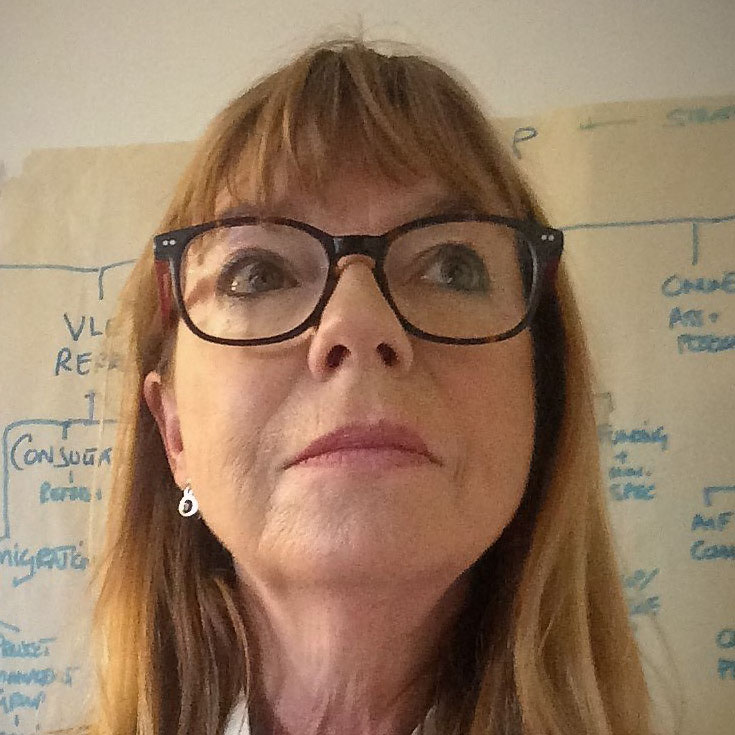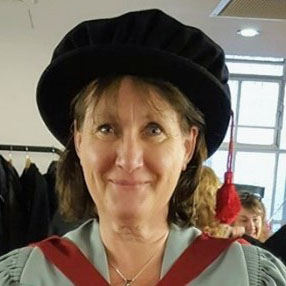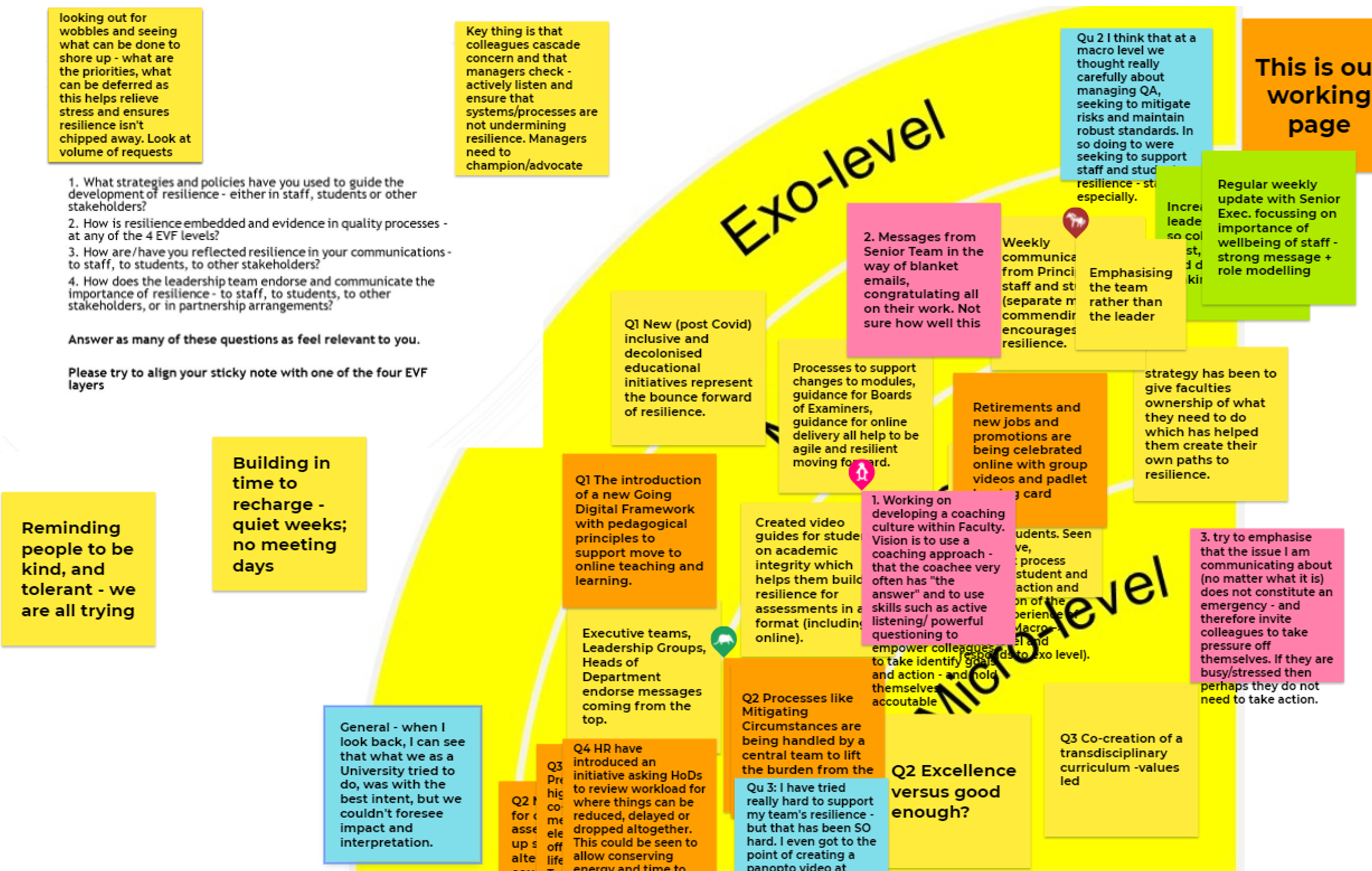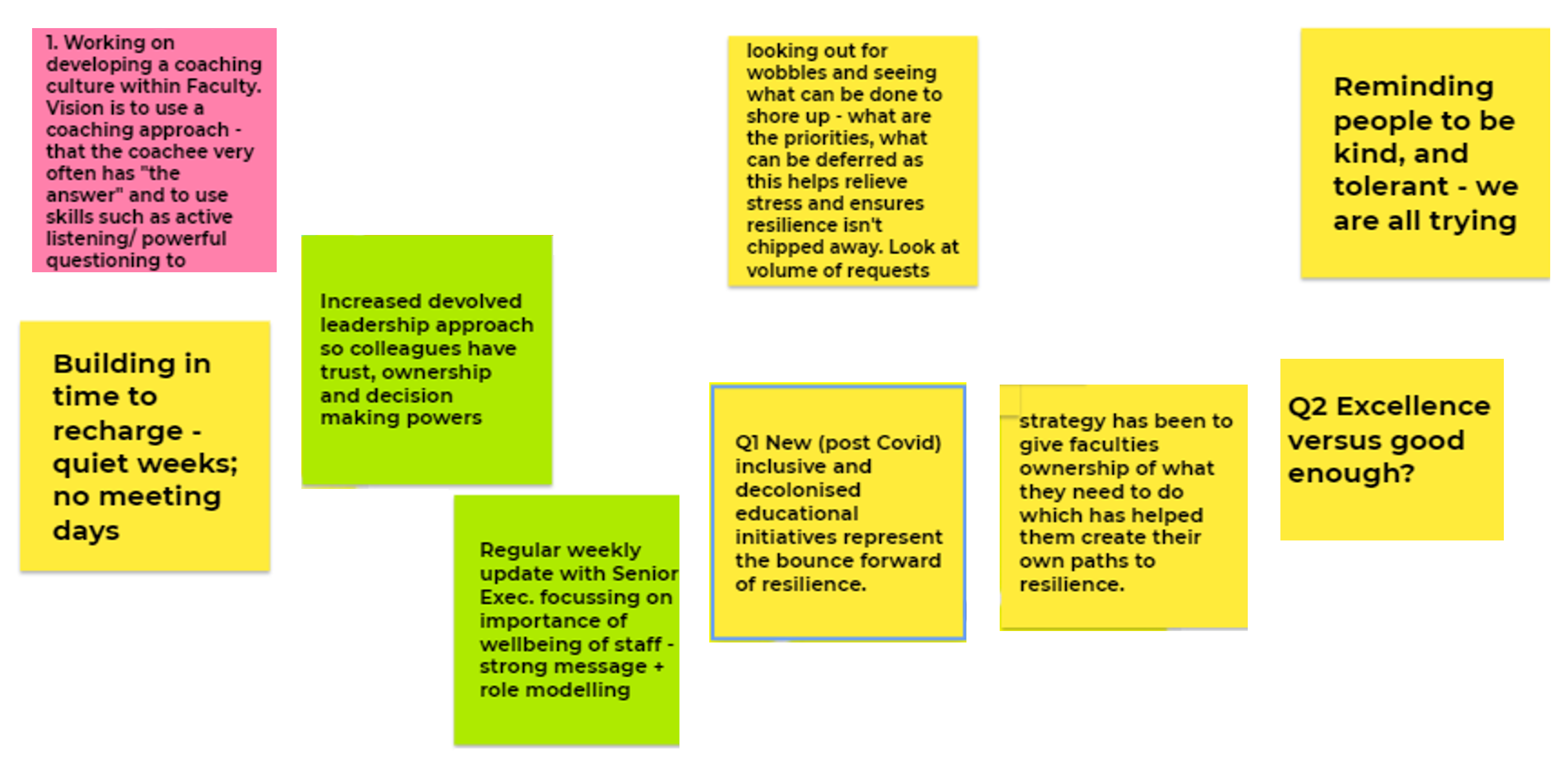5 May 2021
Blog five: Folks made of the right metal, the Go To People
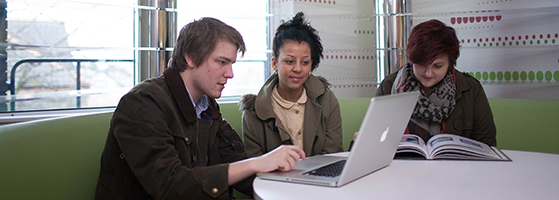
Authors
Dr Alison Nimmo
Head of Academic Development, Glasgow Caledonian University
Dr Fiona Smart
Head of Learning and Teaching, Edinburgh Napier University
Our last gathering of the Resilient Academic Leadership Collaborative Cluster fell in the busy academic period at the end of April, but our band of intrepid Principal Fellows (PFs) on their quest for the meaning of resilient academic leadership did not falter. One colleague came into our last gathering whilst playing sneaky truant from a simultaneously running management meeting. One colleague could not attend as we had entered the marking period, so they contributed to the online pre-activity. One had to run emergency staff crisis meetings, but come back they did, breathless but keen for the chance to meet for the last time.
When a comment suddenly appeared in the Chat - ‘I can hear what you are all saying’ - we knew that we had one colleague vicariously participating in our gathering whilst simultaneously attending a conference event. Intriguingly one colleague had to find out how many urinals there were in a particular corridor and how this would impact on physical distancing for a safe return to work. We name no names here of course, we practise resilience and we practise integrity …
As we explored where we had placed our leadership actions in the fourth quadrant ‘Structures and Systems’ we realised that no matter what layer of the EVF was in focus we could see PFs in action. We realised that we were, and were happy to be, ‘the go to people’ for many in our respective universities. The sense of being needed and useful seems to feed the energy bank of resilience of PFs.
There were examples of making quick sprints to support students with problems at programme level and equally of some PFs engaging in marathon tasks to turn round the entire skillset of the teaching staff to respond to the digital pivot. Our sticky notes show where we take action respond originally to the remote teaching and working context and now as we look forward – as far as we dare - to a new hybrid teaching and working world.
But sometimes the energy runs out and we PFs also can feel overwhelmed, when we fall back on the stuff in our heads to do tasks ourselves as its ‘easier’ than trying to coach others on how to do themselves. There was talk of the ‘tipping point’ when being the being the font of all knowledge, and that being the triage person, whilst being a sense of pride and self-worth, could diminish resilience levels.
It all sounds idyllic, resilience emerging through a sense of being needed, a sense of having and offering connections to others in and across the layers, creating in turn a sense of energy… but there is a darker side when the energy runs out. And it will run out at times when the demand outweighs the supply.
So the question we were left with was who do the ‘go to people’ go to when they begin to wane, when the energy ebbs? PFs and other ‘go to people’ in our universities are playing crucial roles, moving across the programmes, departments, schools and institutional levels to check all is well in the learning and working spaces, all is current in staff and student resources, all is supportive in our teaching and working culture and all is effective and achievable in our teaching and working systems and processes. The question of ‘how long, how long can we sing this song’ is one for senior managers to take…meanwhile we will add it as the first track on our resilient academic leadership soundtrack.
That done we gave ourselves a little online shake, shared a collective online grin and agreed that this intangible thing of ‘resilient academic leadership’ was indeed a subtle business.
And as we talked we pondered:
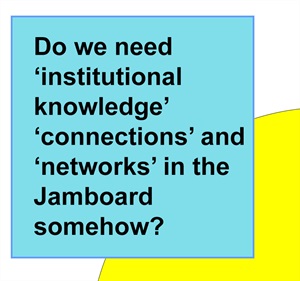
Our interconnectedness, our institutional knowledge, our networks in turn allow us to maintain a sense of proximity sufficient to share the burden when we falter. We spoke of earlier times in the COVID experience when our students stepped forward to support us to deliver our online teaching, and of renewed teamwork. In turn, for some of us the online world of supporting teaching and learning still offers the opportunity to create connections and continue to have a sense of proximity with our students and that should they falter we could be there in a heartbeat.
And when our teams initially faltered with the move to remote working, we reflected together and recognised what were emergent instances of distributive leadership when colleagues stepped forward into new positions creating more flexible and resilient team structures able to respond to unfamiliar challenges. We were interconnected in new resilient formations that almost mocked the previous, somewhat artificially created, hierarchical leadership structures.
Nearing the end of our online gathering we talked animatedly about how being recognised professionally proffered a sense of self belief in our own resilience. There were comments that we were ‘made of the right metal’ – not little twigs blowing in the wind of change, but key people, ‘go to’ people, veritable linchpins vital to our organisations, able to ‘zone out’ at times in order to recoup and bounce back to keep the parts of the university, the departments, the programmes in position and moving forward.
We reflected on our metaphors for resilience and shared examples of how we could see these in our own resilient leadership practices - we were able to ‘turn down the noise’, create a sense of balance or ‘normality’ in perceived crisis situations and ‘cool the fireworks thinking’ that sometimes quickly took flame. A new visual metaphor of resilience as suggested as being the ability to draw back the curtains to open up a wider window onto the world, to support others to see the bigger picture and be able to put ‘stuff’ into perspective. We saw resilient academic leadership in our actions to advocate for a proportionate response to new challenges; and to set expectations for teaching to be good enough. And so musing on this at the end of our fifth gathering brought us full circle to the same question that we posed at the outset in our introductory video to this Collaborative Cluster.
Our Resilience Academic Leadership Cluster has engaged us in five online synchronous gatherings for a total of 7.5 hours over 7 weeks. In true flipped style we also worked in reflective activities in online, asynchronous learning spaces – using Jamboards and Padlets – and that may have taken perhaps another 5 hours. So in total we got to know folks we had not worked with, in some instances whatsoever, for approx. 12.5 hours over 7 weeks. It might not appear a lot but at the end of our fifth gathering there was a felt, and an expressed sense of loss. Loss at not being able to have access in the same way to share experiences with people who originally had been connected through their Principal Fellow credentials, but who had together shared some online experiences and explored some ways of unpacking the intangible asset of resilient academic leadership though playing in an online Jamboard space.
We recognise that we are not all moving in the same spaces of the Evidence Value Framework, nor in the same layers in our respective universities. But we are still connected in that we are all taking academic leadership actions to support ourselves and others to bounce back from this pandemic. We are investing our energy of an intangible asset that we have come to realise is of immense value in these uncertain times for our institutions, our Schools and Faculties, our programmes, our staff, our students and ourselves – the intangible asset of resilience.
